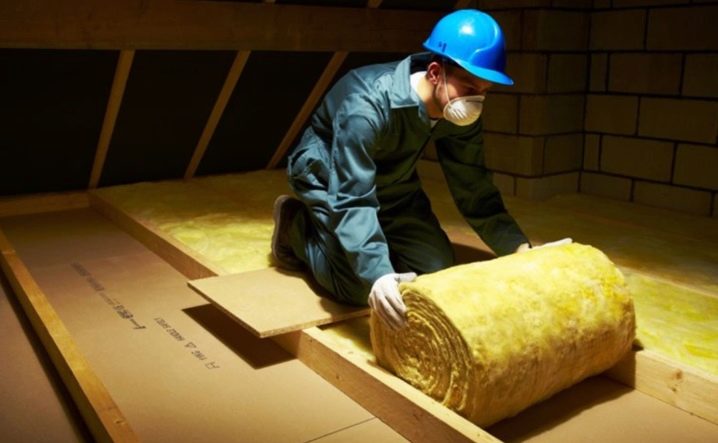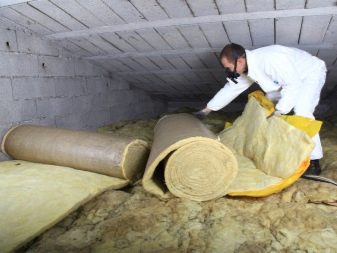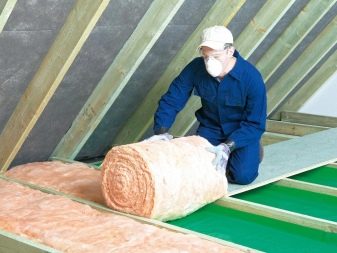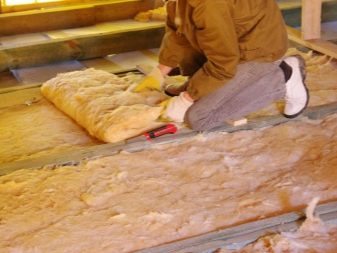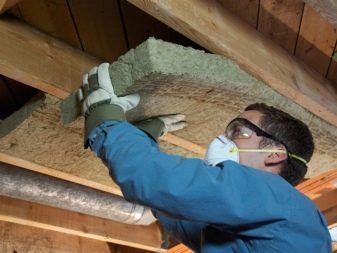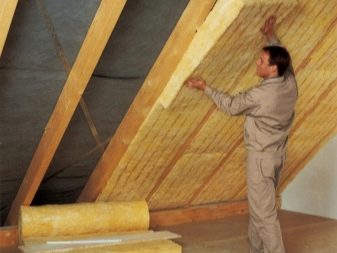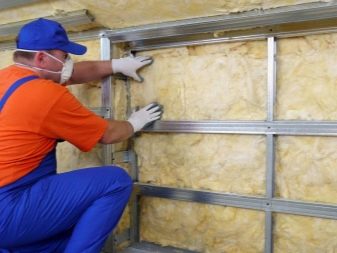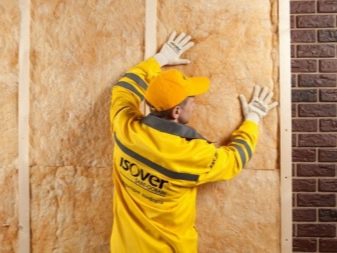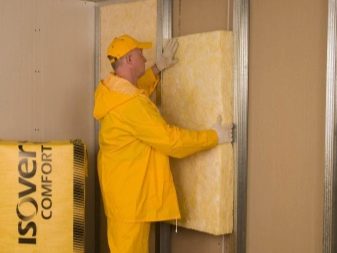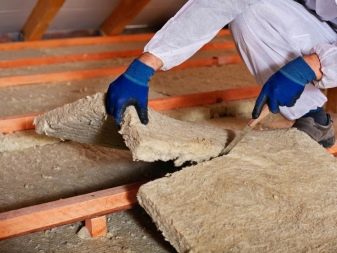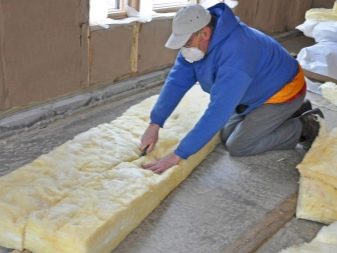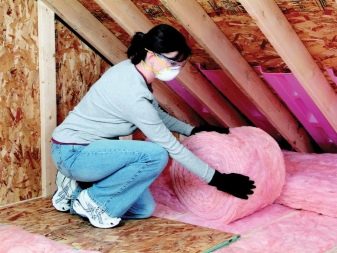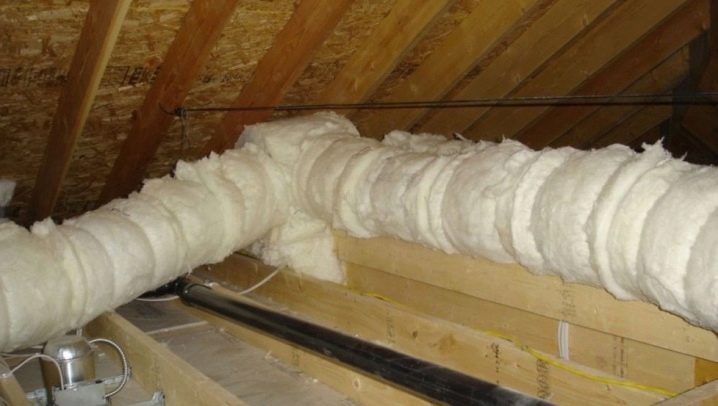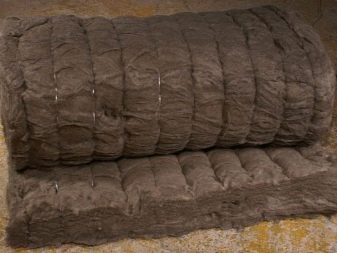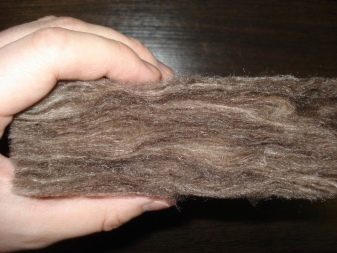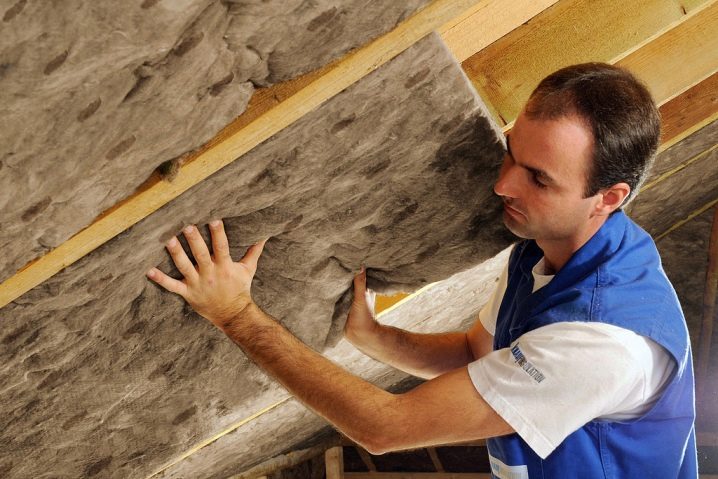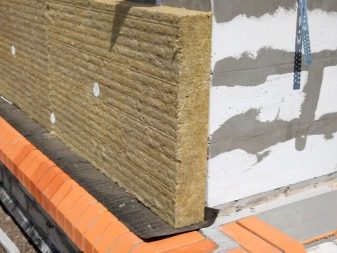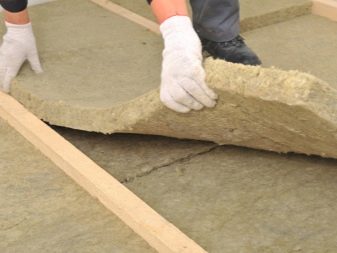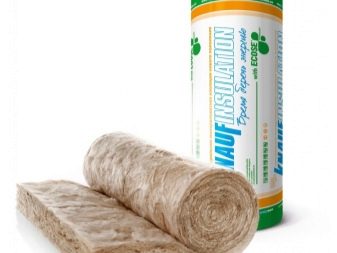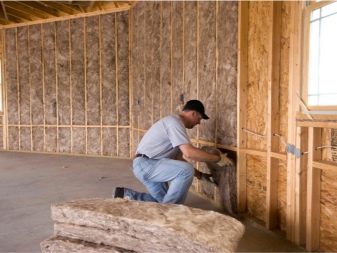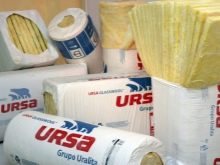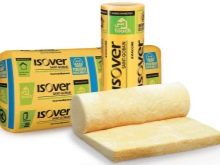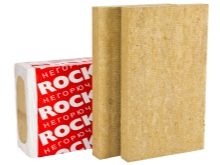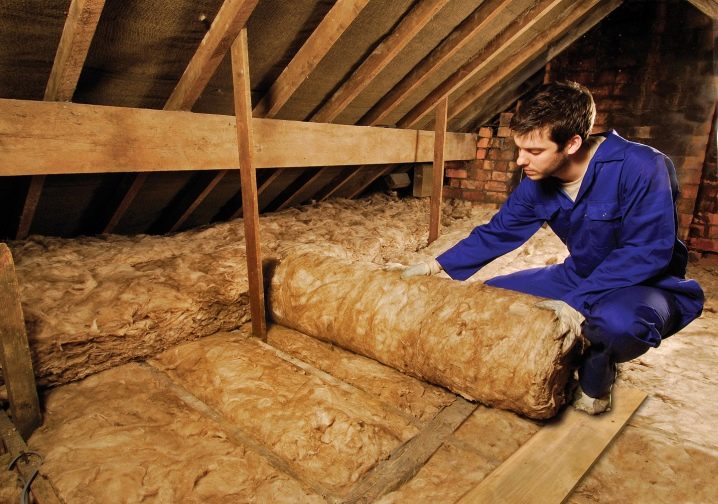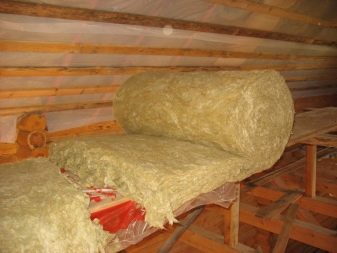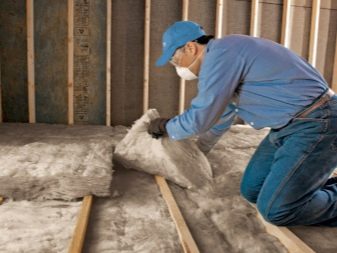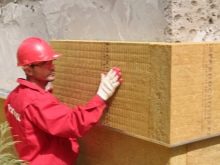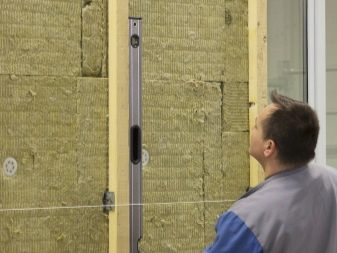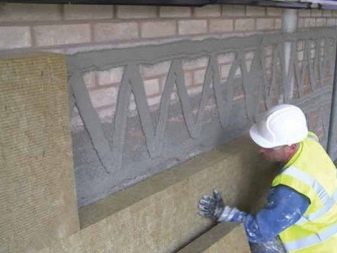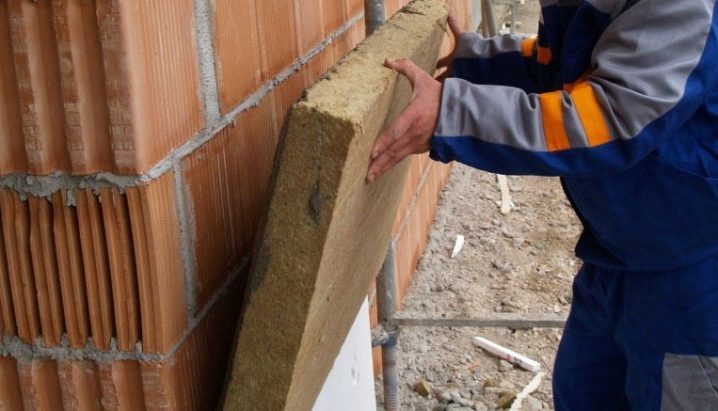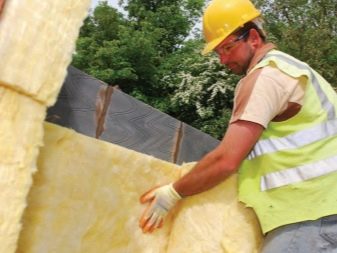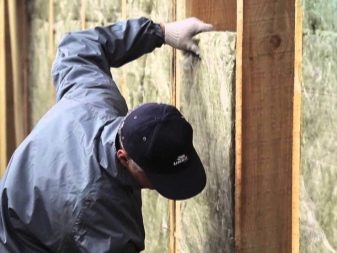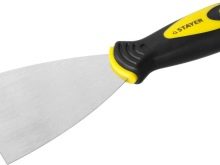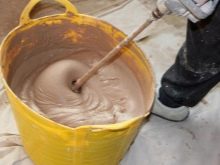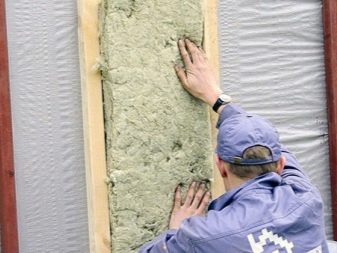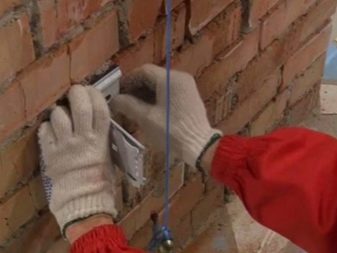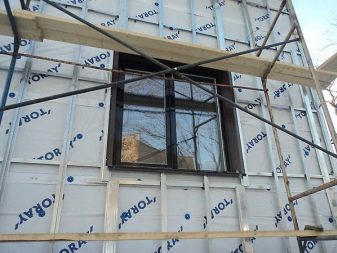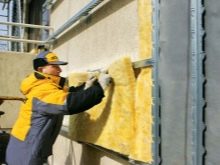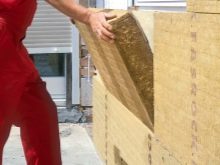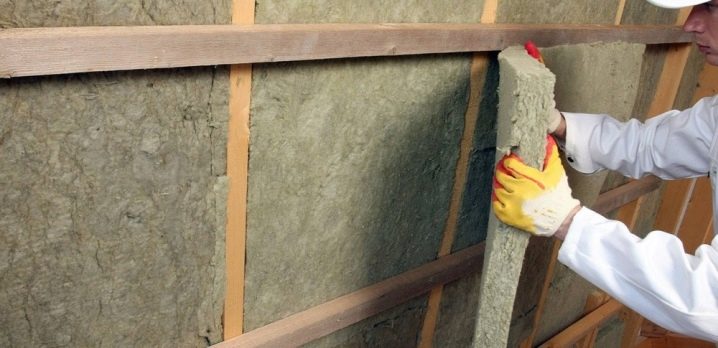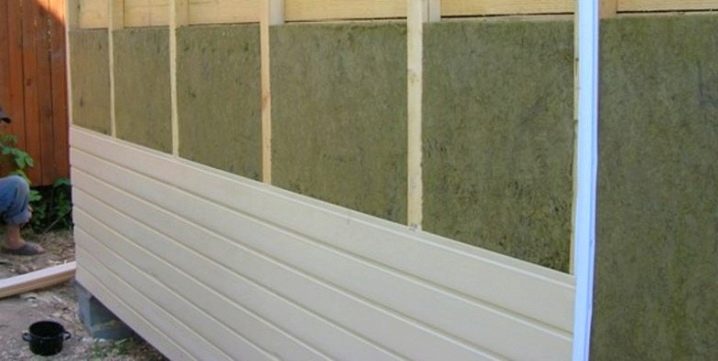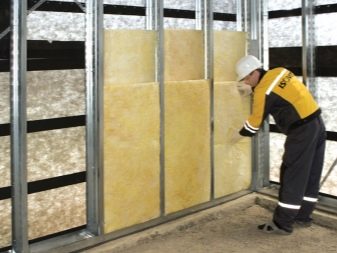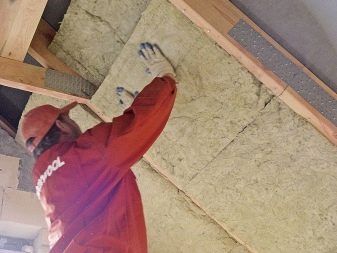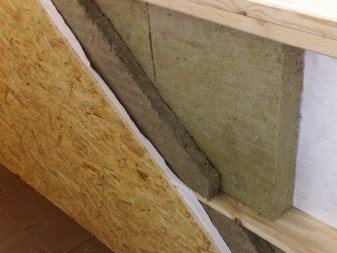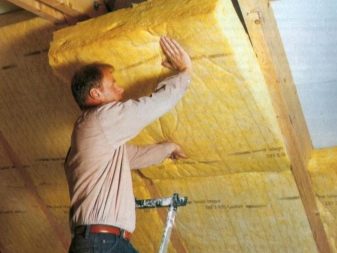Mineral wool insulation: how to choose and use correctly?
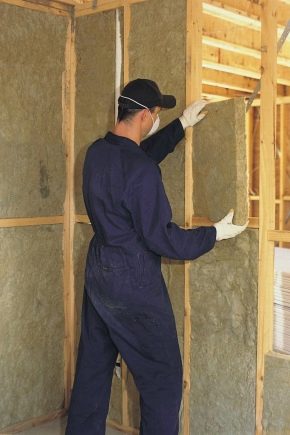
Being engaged in the construction of any private house, it is important to ensure that it is as livable as possible, which in turn puts forward certain norms of heat, which should be indoors year-round. If you do not carry out the insulation of walls and other surfaces, if necessary, the building materials will wear out faster, and any temperature drops will be very noticeable inside the house.
To avoid negative consequences, it is important to choose a convenient to use, safe and reliable insulation, which are mineral wool.
Special features
In the process of repairing or building a house, in addition to issues related to the calculations of the foundation, the choice of bricks, the layout of the future floor plan, it is important to ensure that the rooms are comfortable in all aspects. The correct location towards the light, the optimal dimensions of the room, and a comfortable temperature inside each room.
This can be achieved only with the help of wall insulation, and if necessary also the ceiling, if the attic will be used as a living space.
There are quite a few options for materials that can now be used to make walls warm, and not everyone knows what is best to choose and in what case. It is believed that mineral wool insulation is the most suitable option for use inside the house, because it is not afraid of fire, which protects the walls from possible fire, even in the case of careless handling of the flame.
The most common material that is most often worked with is mineral wool.This is not a particular variant of the set, but a group of insulation materials that are united by the composition in which there is: natural stone of gabbro-basalt rock, waste glass, metals, silicate and clay brick.
Insulation has the appearance of the finest fibers, which can be arranged in a chaotic manner or have a clear direction. Due to this air structure, mineral wool has excellent heat retention performance. The process of obtaining components for mineral wool is complex, additional substances are often used, these can be:
- formaldehyde resin and carbamide;
- phenolic alcohol;
- the combination of formaldehyde with phenol;
- bentonite clay;
- latex, bitumen and polymer emulsions.
For finishing the inside of the house, it is best to use mineral wool, which includes basalt, which is bound with bentonite clay.
These components are considered the safest due to the ecological purity of the product.
Advantages and disadvantages
In order to know exactly what material should be chosen as a heater, it is necessary to understand its positive and negative sides. Thermal insulation with mineral wool has such advantages as:
- low thermal conductivity, which allows you to select this material as one of the most successful for the insulation procedure;
- low risk of fire due to incombustibility of cotton wool;
- the stability of the state of mineral wool at a temperature difference, the plate has the same appearance, without undergoing any changes;
- resistance to moisture absorption from the process of vapor movement between the insulation and the wall, this makes it possible to protect the walls from moisture;
- the composition of the insulation is resistant to chemical and physical factors;
- good vapor permeability, which allows the plates to breathe;
- good sound insulation performance, which is achieved by the elastic structure of the fabric and have an acoustic effect, which gives full protection from external noise;
- ease of installation;
- long service life, which can be at least 25 and a maximum of 55 years under optimal conditions of use.
Based on the foregoing, it can be concluded that mineral wool is an excellent material for warming a room. However, this universal heater has its drawbacks.
- Additional processing of the product with a water-repellent preparation so that the fibers do not absorb unnecessary moisture. If this is not done, wet materials will not do so well with their task, and the insulation will be much worse.
- Large weight of the material, which is essential if you order the delivery of such materials by transport companies.
- The presence of a small amount of phenol-formaldehyde resin, which is harmful to humans. The content of this substance is very small and can not cause harm, but there is always the possibility of special sensitivity to it, which can put health at undue risk.
- The risk of fiber fibers entering the respiratory tract and the mucous membrane of the eye, which forces the use of protective equipment in the installation work.
Buying mineral wool, you should pay attention to the manufacturer, because the quality of products often depends on it. Proven and large companies make more reliable, environmentally friendly and high-quality wool than small suppliers, especially those that sell the product is much cheaper than its market value.
To make the house absolutely safe and to protect yourself and family members from exposure to phenol-formaldehyde, which stands out from the cotton during high temperatures, simply choose a more expensive type of insulation, which is thinner and contains basalt instead of phenol.
Types and characteristics
Mineral wool is a type of material with which you can insulate walls and other surfaces in a room. There are three main options.
Glass wool
It has the form of pressed plates, the thickness of the fibers in them can be 15 microns, and the length is 5 cm. The material used to make glass wool is melted glass, limestone, dolomite, borax and soda. The result of mixing all the components is a rather elastic and durable product. It has a strong hygroscopicity and density, which is significantly lower than any other type of mineral insulation.
The place of use of this heat insulator is technical premises that will not be used for living. This is due to the brittleness of the fibers, which, when deformed, can irritate a person’s skin, and are especially dangerous if they enter the respiratory organs.In this regard, the installation of this material is made only with the use of protective equipment for the eyes, nose and mouth, as well as in overalls and gloves.
Another successful place to use glass wool is the pipeline. Each mineral insulation has its own characteristics, in this type the thermal conductivity is from 0.3 to 0.05 W / (m * K). The temperature range is from -60 degrees to +450 degrees, and the vapor permeability index is from 0 to 0.6 mg / mch * Pa. Glass wool does not tolerate contact with water, as a result of which its heat-insulating performance is greatly reduced.
Slag wool
It is made with the help of blast furnace slag, obtained as metallurgical waste. The thickness of the fibers in this case is from 4 to 12 microns, and the length is 16 mm. Slag dust and small balls can be added to the base material. The place of use of slag wool is non-residential premises or those in which a person will not be long. Due to its high hygroscopicity, low density and poor resistance to fire, it is impossible to use it for finishing the facade, insulating the pipeline, the attic in places where the chimney will pass.
Due to the balance of acids in the composition, the material should not be allowed to come into contact with metal surfaces. The main characteristics of this mineral insulation have thermal conductivity from 0.46 to 0.48 W / (m * K), the range of permissible temperatures from -50 degrees to +250 degrees, the rate of moisture per day is 1.9%. Externally, slag-like looks like plain dark gray wool. This insulation is the cheapest of all three options, which is its main advantage.
Stone wool
This material is also called basalt wool, it is produced through the process of melting volcanic rock (basalt, diabase, porphyrite), after which it is processed in a centrifuge, where the mass of plastic takes the form of fine fibers. The next step is the addition of binding components and water-repellent agent, which help to make the insulation resistant to moisture. The resulting mass is pressed and processed at high temperature, which gives the output quality insulation. Due to the low thermal conductivity, good vapor permeability and moisture resistance, stone wool is the most suitable option for finishing the facade of a residential building.
Plates can withstand sudden changes in air temperature, while not deformed.
If we consider the characteristics of the material, the thermal conductivity will be 0.032-0.048 W / (m * K), vapor permeability will be 0.3 mg / (mg / mch * Pa), and the maximum temperature that stone wool can withstand will be 1000 degrees.
This type of insulation is the safest for work and the insulation of residential premises., because the composition does not contain formaldehyde resin, and the binder is bentonite clay, which can be used for the food industry. Environmental friendliness of the material, ease of use, safety of installation make this look the most popular among the rest.
As for the other indicators, the size of the mineral wool will have the following characteristics:
- thickness range from 30 to 100 mm;
- length from 1170 to 1250 mm;
- width from 565 to 600 mm.
If we talk about non-standard parameters, the manufacturer Knauf creates a mineral wool with a thickness of from 50 to 150 mm, where the length and width also differ. The thickness of stone wool is from 5 to 10 cm, the length is usually 2 m, and the width is 1 m, but each manufacturer has its own specific dimensions of insulation. As for the slag wool, the fibers have a thickness of from 5 to 15 microns and a length of from 15 to 50 mm.
Tips for choosing
Thermal insulation wool must be of high quality so that it can safely insulate the house outside. To find the most suitable option, you should pay attention to the various manufacturers of this material. The best German quality is Ursa, Isover, Rockwool. Choosing a suitable option, you should pay attention to the relationship between price and density of mineral wool.
The high density of the material requires additional raw materials, which means it costs more.
If there is a desire to buy cheaper options for glass wool and slag wool, then you should not hurry, because these materials have low sound insulation, besides, they cannot retain heat as well as mineral wool. Installation is also more complicated, because working with glass wool is very dangerous, especially in inept hands.
Choosing the highest quality material for wall insulation, It is necessary to give preference to mineral wool, but this material has its own characteristics.
- It is important to know in which direction the fibers are located: with a vertical position, the product will be better kept warm and isolated from excessive noise.With a dynamic arrangement of the fibers, wool gets more durable characteristics and is able to withstand heavy loads.
- It is worth paying attention to whether there is a GOST mark on the package.that also says a lot about the technology of the product. If we are talking about slabs of mineral wool, then they are declared in accordance with GOST 9573-96, and in the case of firmware mats it will be GOST 21880-94, as for PPG plates, the value will be equal to GOST 22950-95.
Planning to finish the mineral wool indoors, you need to take care of the correct size of the material. All indicators should correspond exactly to those indicated on the package, therefore it is better to personally measure everything, especially with regard to the thickness of the product, on which the quality of the entire repair will depend.
If finishing works are planned on top of the insulation, then you need to purchase additional materials that can be used for plastering, painting or wallpapering.
Insulation can be used not only for walls, but also to overlap the ceiling, and sometimes the floor. If non-residential premises, such as an attic or basement, need to be made suitable for a full or partial stay, then without placing insulation boards can not do.The roof is insulated in the attic and tol in the basement, which helps to create optimal living conditions with minimal effort.
Subtleties of installation
The device insulation home with their own hands - not an easy task, but if you have the necessary knowledge, the process becomes more understandable. To insulate the facade of a residential building, you can use a variety of materials, but mineral wool has been holding the lead for many years. It can be used both from inside the house and outside, and the result will be equally good.
It is believed that the use of foam from the outside of the walls is more productive, since it does not absorb moisture, unlike cotton wool.but there is a significant drawback in it, this is a fire hazard, which is especially important in the case of a country house. Due to its fibrous structure, mineral wool slabs allow the walls to breathe, which is not done by the foam, because the surface may begin to deteriorate over time.
If you install the mineral wool correctly, this will protect the material from the danger of getting wet. It is important to choose the density of the product, it should be at least 140 kg / cubic meter.If you buy a more subtle option, then it will start to sag over time, losing its qualities. Minplate plate usually has two thickness options of 5 and 10 cm.
It is best to choose a thicker version, because it holds its shape better, does not deform and does not sag.
When choosing between a slab and a roll of cotton wool, it is better to give preference to the first type of product., since it does not need to be cut, which means that the process of warming will go faster and safer for the health of the worker. Considering the variants of mineral wool, of which there are quite a few today, it is best to opt for the basalt variety, for which the impact of water is the least dangerous.
Choosing the best option insulation for the facade of the house, it is important to know the correct sequence of works. Begin by preparing the walls for installation, and then proceed directly to the process of fixing mineral wool slabs to the surface.
Training
In order for the mineral wool to adhere well to the wall surface and effectively perform its functions, it is important to properly prepare the wall surface for the installation process. It should not cause great difficulties, the technology practically does not differ from work in case of warming by polyfoam. For installation, you will need the following tools and materials:
- scraper;
- spatula;
- plaster mortar;
- primers;
- pliers;
- sandpaper.
- Work on preparing the facade for insulation begins with cleaning the old plaster, it will interfere with the tight fit of the material to the surface, which will cause the development of fungus and mold, which will harm both the wall itself and the insulation. If the top layer is loose, then you can get rid of it with a spatula, all hardened pieces are knocked off with a hammer. This stage is important for high-quality surface warming, preventing the possibility of condensate accumulation in cracks from the old plaster.
- The next step will be cleaning the walls of the house from metal products of any kind: nails, staples, gutter and so on. Such measures are necessary due to the corrosion of metal from moisture, which in any case will accumulate under the insulation. Over time, rust will tread through the mineral wool, and ugly stains will appear on the decorative finish.
- The next stage of preparation will be thorough cleaning of areas with grease stains, pollution from dust, the presence of fungus, the growth of moss or lichen, which ultimately will have a detrimental effect on the layer of insulation and the wall itself. If the facade of the house was painted, then all the paint needs to be removed, even if it keeps well. Only after the wall has been cleared of everything superfluous, can the plastering process be started, which will help to remove all the defects of the walls, irregularities, chips and cracks in which water can accumulate and microorganisms develop. To prevent this from happening, it is necessary to additionally treat the walls with an antifungal primer.
- After all the work on cleaning the walls has been completed, all defects have been eliminated, and a finishing coat of primer has been applied, it remains only to wait for the complete drying of all materials. Only after that you can begin installation of mineral wool on the outer side of the walls of the house.
Technology
The installation works of mineral wool require not only knowledge, but also skills to work with it. TThe technology of insulation is different from working with foam, because it is necessary to carry out all activities responsibly. If you fix the mineral wool badly and poorly, then it gradually destroys the plaster under itself, which leads to a partial or complete collapse of the insulation.
- The technology of fastening wool slabs is reduced to the fact that initially you need to make plumb lineson which it will be possible to set the material smoothly. The easiest, but no less reliable way is to attach the nylon cord to the nails. One nail is hammered into the upper part of the wall, the second - at the bottom. The distance from one cord to the other should be 80 cm.
- This system helps to make and formwork, correctly positioning profiles. The cord is tensioned at a short distance from the wall, which allows you to freely install additional structures, if they are needed, while having a clear guideline. Placing the landmarks along the entire length of the wall, it is important to install a vapor barrier film before work with the formwork and insulation begins. This measure allows you to protect the surface of the wall from excess moisture, at the same time minimizing the amount of condensate that falls on the wool, preserving its integrity and prolonging the life.
- Since mineral wool is quite heavy, just fix it on the surface of the wall, like foam plastic, it will not work, it will eventually begin to move away. In this case, for high-quality insulation it is worth using metal profiles in which the material fits tightly.To ensure a better result, you should use a special glue. Plastic dowels with large caps will provide an additional insulation of the insulation to the wall, they allow you to guarantee the quality of work.
- Plates must be mounted correctly.so that each plate fits snugly to the next and has direct contact with the crate. Otherwise, cavities will be formed that will affect the functions of thermal conductivity, significantly reducing them. Having placed all the plates on the wall, you need to make a reinforcing layer, putting on the surface of the mineral wool glue that treated the material during installation. By gluing it several times, you can get a strong reinforced layer that will protect the wool from the effects of wind and rain, which will save it from destruction by the forces of nature.
- The last stage, preceding the application of decorative finishes, will be the second layer of waterproofing foam, designed to further protect the insulation from the adverse effects of environmental conditions.
It is best to use lining or plastic panels as decorative elements in the case of wadding,because they are able to pass air, which is extremely important when we warm the facade with mineral wool.
Useful recommendations
- Buying mineral insulation first worth reading recommendations for usewhich are offered by the manufacturer, because they are based on the knowledge of the raw materials taken for a particular material and the options for its processing until the final appearance. If the work is performed in inconvenient areas where you need to cut pieces of cotton or reduce its size, then this procedure is performed using a special knife.
- Getting mineral wool or starting its laying, you need to inspect the slab and evaluate the flatness of its edges, if they are tattered or torn, then it is worth replacing the product in the store or cutting it off if the problem was found at home. There are areas where it is especially important to create maximum thermal and sound insulation, for which wool is placed not in one, but in two layers at once. Each tile should overlap one another, and in the case of crates, its pitch should be such that the plate fits tightly inside, leaving no gaps.
- Since mineral wool has a tendency to accumulate moisture, it is recommended to use more indoors. To make effective insulation outside, you need to install a vapor barrier, on top of which is already located insulation. Such a measure will help protect the wall and the inner part of the insulation from the negative phenomena associated with moisture. If we are talking about the effects of wind, rain and snow, then another layer of vapor barrier can be used for protection, the effectiveness of which will be enhanced by a special adhesive solution that can be applied over the finished insulation.
- The use of mineral wool has been and will be popular for many years as this material is harmless, environmentally friendly, can be used inside and outside the building, does not burn and has good sound insulation characteristics. The installation process has a number of features, knowing that you can install the plates quickly and efficiently, for many years providing a comfortable stay in the house.
How to insulate a house with mineral wool, see the video below.
